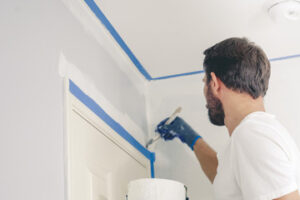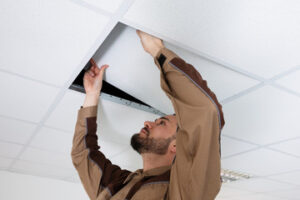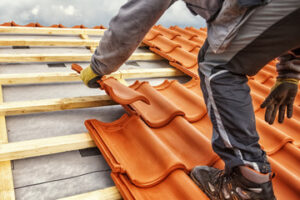Modesto Painting Company offers a range of services that can take your home to the next level. From paint color consultation to thorough surface preparation, they are experts at transforming spaces into masterpieces.

They also know which paints work best for different surfaces and weather conditions. This ensures the finished product will stand up to everyday wear and tear for years to come.
A fresh coat of paint is a powerful tool for changing the mood and feel of any space. It can breathe new life into old, drab rooms and give your home a boost of curb appeal. However, not all painting contractors are created equal, and choosing the right one for your job can make all the difference in your finished product.
A reputable painting company will provide high-quality finishes that can stand up to years of wear and tear. Their team of professionals will take the time to carefully prepare surfaces, including patching holes, sanding rough areas and priming. They will also take care to protect fixtures and furniture from accidental damage or splatter during the painting process.
In addition to interior and exterior house painting, a good painting company can also handle cabinet refinishing and trim work, like baseboards and door casings. This is a great way to refresh the look of your kitchen or bathroom without the expense of a complete remodel. Cabinets are often touched and handled frequently, so they tend to show wear and tear more quickly than other surfaces in your home. Refinishing your cabinets with a high-quality finish can help prolong the life of your cabinets and improve your home’s overall aesthetic.
A high-quality house painting company will also be able to offer color consultation services. They can help you select the right color options for your space based on lighting conditions and other factors that will affect how colors appear. Their knowledge and expertise will ensure that you end up with a finished product that matches your desired style.
Exceptional Customer Service
Painting contractors must prioritize the customer service experience in order to thrive. A strong client relationship translates into repeat business, referrals, and brand advocacy. Exceptional customer service starts with the hiring process and continues throughout each project.
Professional painters know what it takes to create the best results in both residential and commercial spaces. They understand that a fresh coat of paint doesn’t just protect surfaces from weathering and damage; it adds value to the property, promotes regulatory compliance, and creates a welcoming atmosphere for clients and employees.
However, not every company claiming to provide superior interior or exterior painting services can actually deliver on their promises. If you are not happy with the quality of work, it may be a sign that the contractor is not living up to their high standards of workmanship or customer service.
One way to verify the reliability of any painting contractor is to look at their online reviews and testimonials. The most trustworthy painting services near me will have thousands of glowing comments from previous customers that prove their commitment to the highest standard of workmanship and customer satisfaction.
Another way to determine whether a painting contractor delivers on their promises is to ask for references and contact them directly. Then, request to view previous projects and inspect the work for yourself. A reputable painting company will not hesitate to show you their work and answer any questions you have about the process or their work.
A great painting company will also offer a variety of additional services that can help you get the most value for your money. This includes color consultation and a selection of finish options that can be customized to your taste and the conditions of your space. They will also advise you on the best type of paint for your budget and can recommend cost-cutting tips to make the most of your investment.
When you choose a painting company, it is important to make sure they have the proper licensing and insurances for working in your home or business. Additionally, they should have a solid customer support system in place to address any problems that might arise during your project. If you notice any issues, you should bring them up to the foreman or manager right away. Oftentimes, these issues can be resolved quickly with the right communication and transparency.
Aesthetically Pleasing Spaces
Painting is a cost-effective way to change the look of an interior or exterior space. It can also provide a more welcoming feel or energize a room. A painting company can enhance a property’s aesthetics with the right paint color, texture, and design style. It’s important to find a contractor with a strong portfolio and years of experience.
When it comes to commercial spaces, painting experts understand that aesthetics play an important role in brand image and employee morale. Studies have shown that color influences consumer perception and can have a dramatic impact on business prospects. A good painting company will help businesses choose color schemes that align with their brand’s ethos.
Murals are a great way to bring a company’s identity and vision to life. The best murals are carefully conceived and executed by expert painters who are skilled at capturing the essence of the company in a creative and captivating way. Murals can transform dull walls into an aesthetically pleasing space that elevates the company’s brand image and impresses clients.
Using different painting techniques and color palettes is one way to make a commercial space more visually engaging. Painting experts can use textured and faux finishes to create an eye-catching design that is both unique and sophisticated. They can also create accent walls with bold colors or geometric patterns to draw the eye and make the space more interesting and inviting.
The appearance of a property is the first thing that visitors notice, so it’s important to keep it clean and appealing. A fresh coat of paint can dramatically improve a building’s visual appeal and create an attractive environment that welcomes customers and inspires employees. A professional painting company can work quickly and efficiently, minimizing disruptions to daily operations.
A quality painting contractor should offer a variety of coatings and finishes, including epoxy flooring, which is long-lasting and highly durable. It also reflects up to 300% more light than other floor types, making it an ideal choice for commercial spaces. A painting company can install epoxy flooring in a wide range of designs and colors, from a sleek metallic sheen to a multi-colored pattern.
Long-Lasting Results
A fresh coat of paint might seem like a superficial addition to your home or business, but it can actually make a big difference in the look and feel of the space. Whether you want to add a splash of color or simply update the existing style, working with a professional painting company is one of the best ways to achieve high-quality results.
Experienced painters understand the importance of thorough surface preparation before applying paint. They also know how to use specialized tools and techniques for different surfaces, which will result in long-lasting finishes that resist wear and tear. Furthermore, they take care not to leave any smudges or drips behind, which can cause the paint to fade more quickly.
Moreover, they are skilled in using a variety of finishing techniques, which will enhance the beauty of your home or business and improve its value. For example, they can perform drywall repair, patching and taping, and sanding before priming and painting. Additionally, they have access to top-of-the-line equipment and materials that aren’t always available at your local hardware store.
When you choose a painting company, it’s important to ask about their previous work and references. This will help you get a better sense of their craftsmanship and expertise. In addition, be wary of any company that offers extremely low prices as this may indicate subpar materials or lack of experience.
Repainting the interior of your home or business can be a challenging task, but it is vital for maintaining the condition of your property. Nail pops, wall damage, water spots and other factors can lead to discoloration that makes repainting necessary. Hiring a professional can help reduce the hassle and expense of this project by ensuring that it is completed properly the first time.

